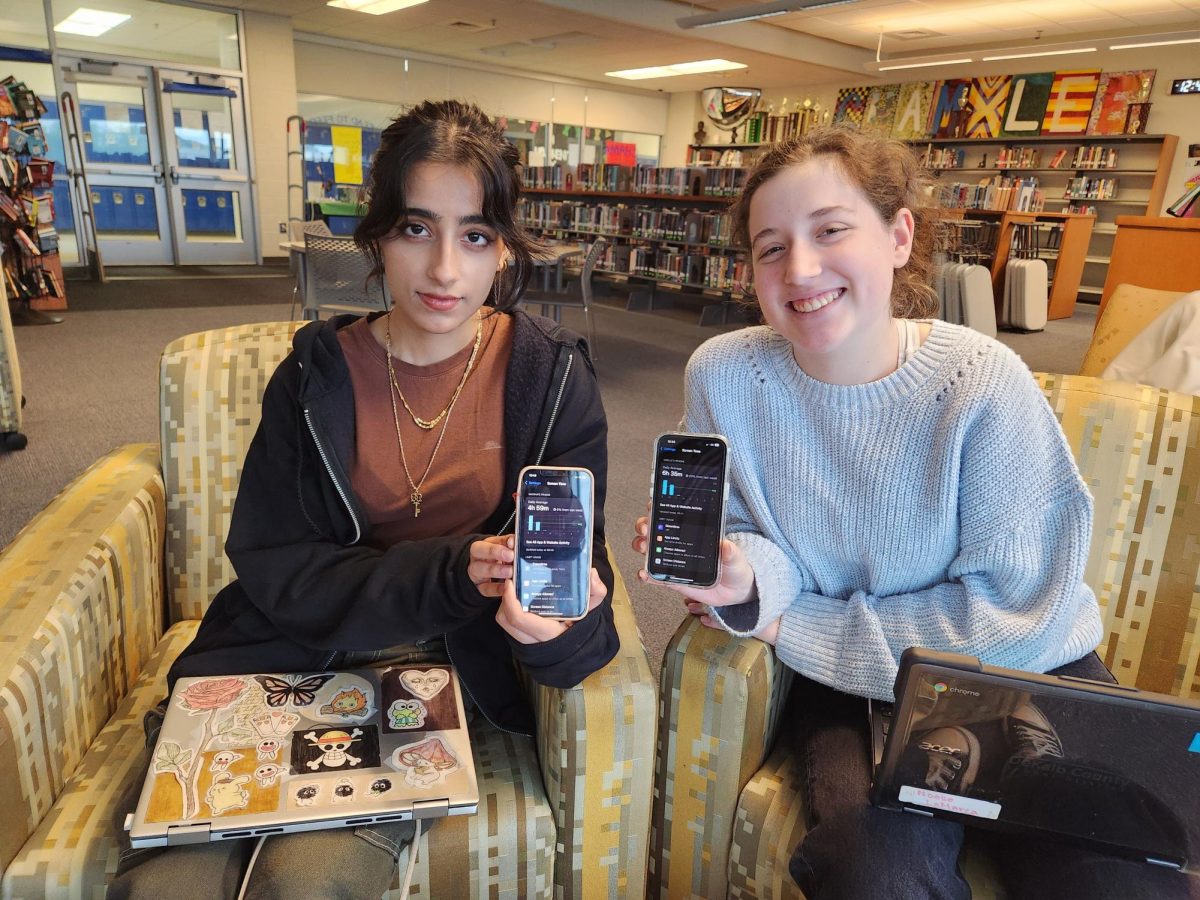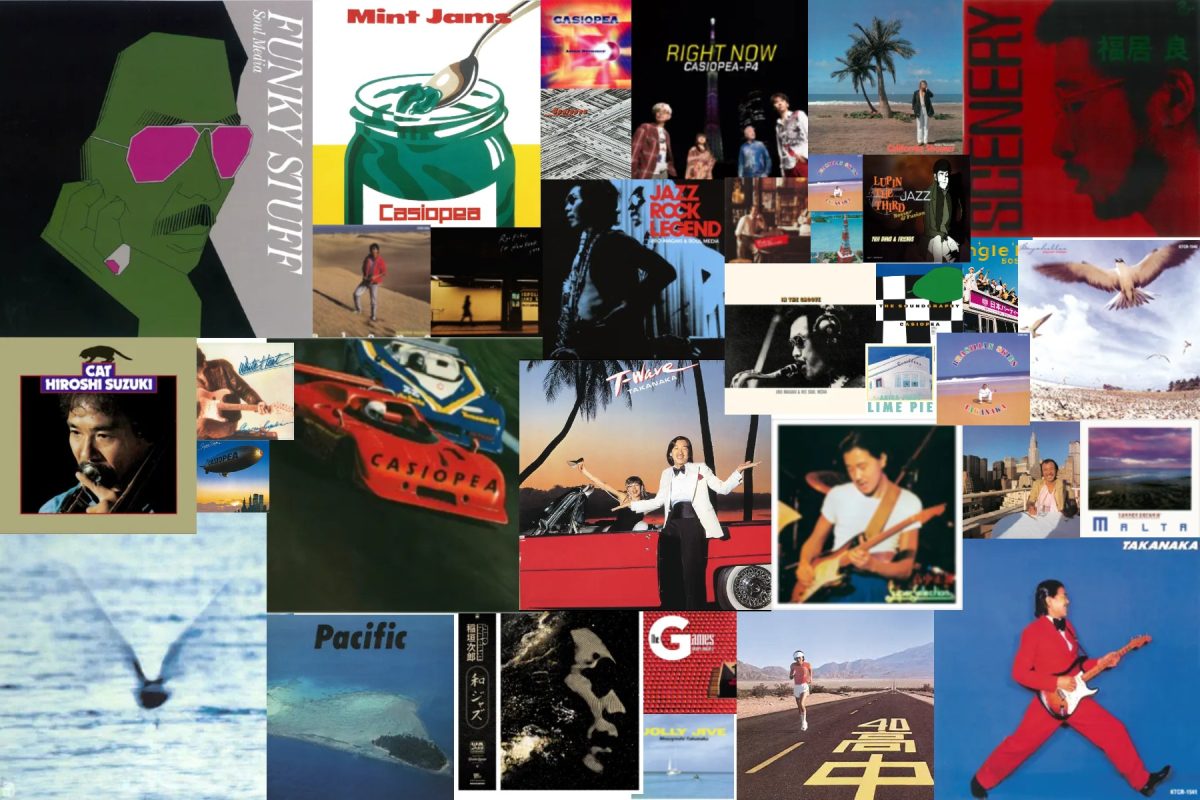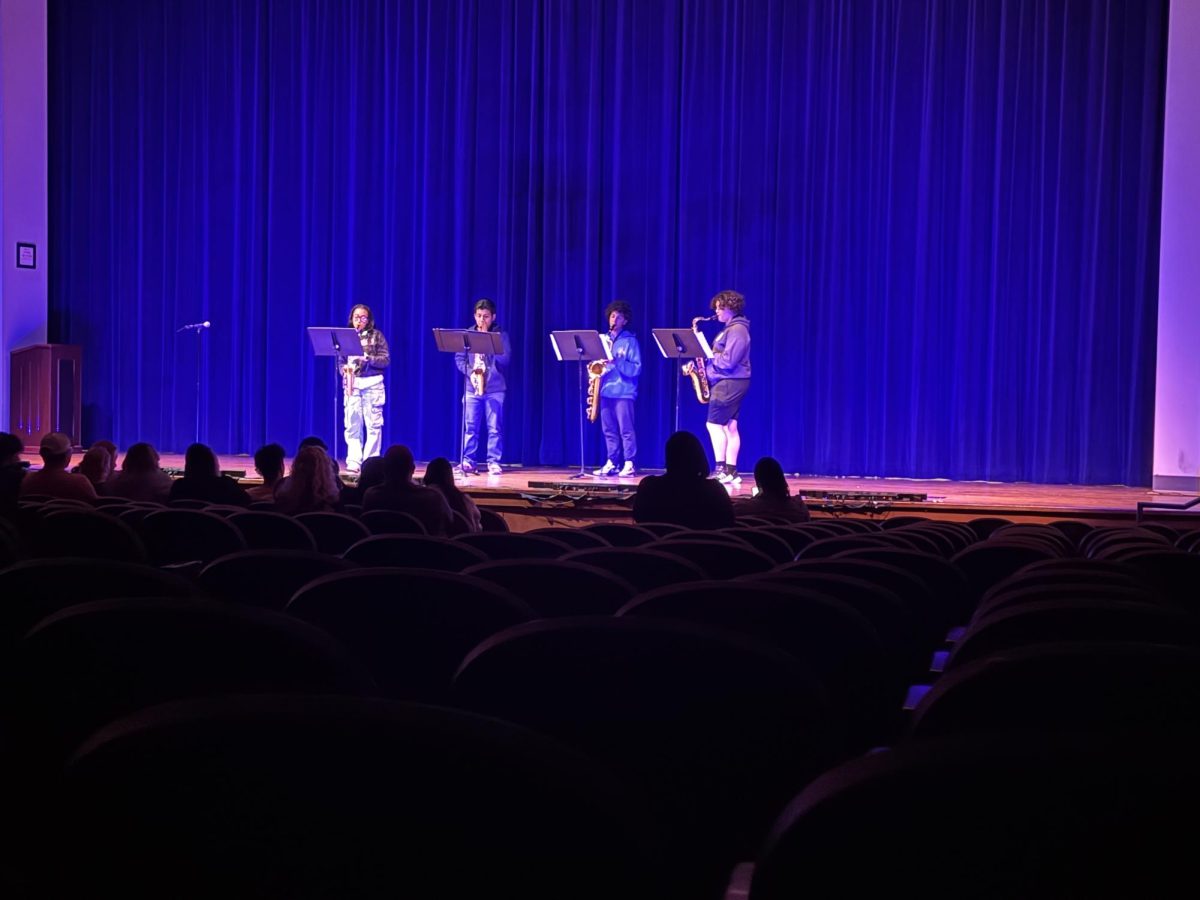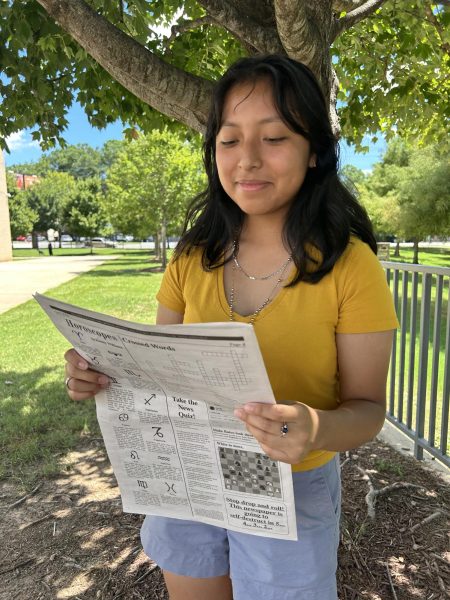Look around the halls and classrooms of Chamblee High – or any school for that matter – and you are likely to see students hunched forward, staring intently at the screens of their phones.
No longer are they simply checking for a reply, an update or another notification. Now they are liable to spend prolonged periods of time staring at their phones. Is this a problem? How much time on a phone is too much?
When students at Chamblee were asked to check their screen time, some were surprised, others were not surprised at all, and still others were unaware they could even check their screen time.
“[I think my daily screen time is] between six or eight hours,” said Edwin Ochoa (‘24) before checking his daily screen time average. “It’s eight hours and 23 minutes. That’s not bad.”
“[My daily screen time is ] probably about like six hours,” said Owen Veith (‘24) before checking his screen time. “Eight hours and 50 minutes. I’m so terrible.”
Average Screen Time/Top Apps
The average screen time for students here at Chamblee, taken from a sample of 105 students, is six and a half hours. When asked what these students do on their phones, average responses ranged from social media to texting to schoolwork.
“[I use] Instagram because my best friends are always sending me stuff in there, like Instagram reels,” said Camera Phiol (‘24). “We are always texting in there and sending each other stuff, and that’s literally all. [I also use] Snapchat because I like to send streaks. I text a few people on there [as well]. TikTok because me and my best friend are always sending stuff on there. I just scroll during my free time. Messages because I’m always texting my mom, dad, best friend, and family members. Safari, I’m usually doing research or schoolwork there.”
In this research, the following apps, in order from the most used to least, were the top five most used by students: TikTok, Instagram, Safari, Messages, and YouTube.
“When I used to have [TikTok] I had a hard time going to bed at night because after one video, there was another and then another good one [would pop up],” said Jayden Shields (‘25), a previous TikTok user. “Then, another funny one [would pop up] and a funnier one from the previous one. It keeps coming and coming and I wouldn’t get off. I can understand why it’s so popular among high school students.”
The average screen time for teachers at Chamblee is three hours and forty minutes, based on a survey of 15 teachers. This is a striking difference of almost three hours less or half the time spent by average students. The top five apps used by teachers, in order, are Messages, Facebook, Instagram, Wordscapes, and TikTok.
When teachers were asked to view their screen time “What is that?” or “Where do I look that up?” were the main responses. Once they found it though, reactions varied.
“I’m okay with it because I don’t check my phone very often at work, so a lot of my screen time is after work,” said physics and biology teacher, Claudia Hagan, whose average screen time was three and a half hours a day. “I use my phone to decompress. I play games and transition from being in teacher mode to being a regular human. So I don’t mind.”
The response of Ms. Hagan is shared by teachers and students alike: they are completely fine with it and it’s not an issue for them. Others not so much.
Necessary Evil or Helpful tool?
“I want to reduce my daily screen time because I hate mindlessly scrolling on TikTok,” said Grace Psalmonds (‘25). “I would rather get out and do things that are actually going to benefit me but it’s hard to get out of it.”
Psalmonds isn’t alone, it’s a reality that many face. The sentiment that phones can be addictive is one shared between students and teachers alike.
“It’s immediate gratification. Everything you want is right in front of you. Whether it is to be entertained or whether it’s to get an answer to something, it’s right there,” said 10th-grade literature teacher, Jennifer Andriano. “I can get exactly what I want in a couple of strokes.”
Because using your mobile device can be addictive, students and teachers try to find ways to minimize their phone usage.
“A lot of times I throw my phone somewhere to get it out of my hand. Or I’ll just turn it off, or I’ll tell my mom to take my phone,” said Michael Bryant (‘26).
Others try to find constructive ways to utilize the technology in their hands.
“[When I want to be on my phone], I play music and teach myself something new. I like to learn something new or teach myself something new,” said Nykira Bell (‘26). “I play music, put my phone down, and go actively do something.”
However, some are used to having their phone on them constantly.
“I can be away from my phone, but I feel like when I step away from my phone I’ll miss a phone call or I’ll miss a text message,” said 11th and 12th grade ELA teacher Deana Harrison.
Others are simply afraid of being excluded.
“I think if I deleted my apps I’d get FOMO [fear of missing out]. I’d get so much FOMO because I tried to delete Snapchat and I got so much FOMO,” said Mckenzie Hensarling (‘25).
When asked how much time of their screen time is ‘productive’, the majority of respondents, both students and teachers, responded that it’s around 10%, less than what they’d like it to be.
“[My daily ‘productive’ screen time] is probably 10% because a lot of my screen time like, the stuff that would be like productive, would be needing to Google something real quick at work or contacting teachers,” said Dr. Hagan. “It would be a small amount compared to what I’m doing outside of work.”
There are factors other than age that contribute to the amount each group spends on their phone. For example, maturity, family, and responsibilities.
“[I think the daily screen time for teachers is] maybe six to seven hours, depending on age and family status,” said Harrison. “I don’t have any children at home so I might be on my phone more than someone else [who does have a family].”
“[Yes those teachers have] to take care of their kids, drive their kids’ places and stuff like that [ would spend less time on their phone],” adds Andriano.
Regardless of the reasons adults and teenagers alike, are spending multiple hours a day looking at their phones. Are those hours productive?
“I’ve been a lot more productive when I have less screen time,” said geometry teacher John Hubbart. “The more screen time I have, the less I actually get done and I’m sure that’s true for students and teachers. [We need to] switch back to flip phones and we’ll all be a little better off.”
Note: For those who don’t know how to check your screen time on iPhone: Go to settings, scroll, and search Screen Time, it should be a purple icon, click on it and you’ll be able to see your daily/weekly screen time average. On Android, go to settings scroll or search for Digital Wellbeing and parental controls, and you’ll see your daily-weekly screen time.














